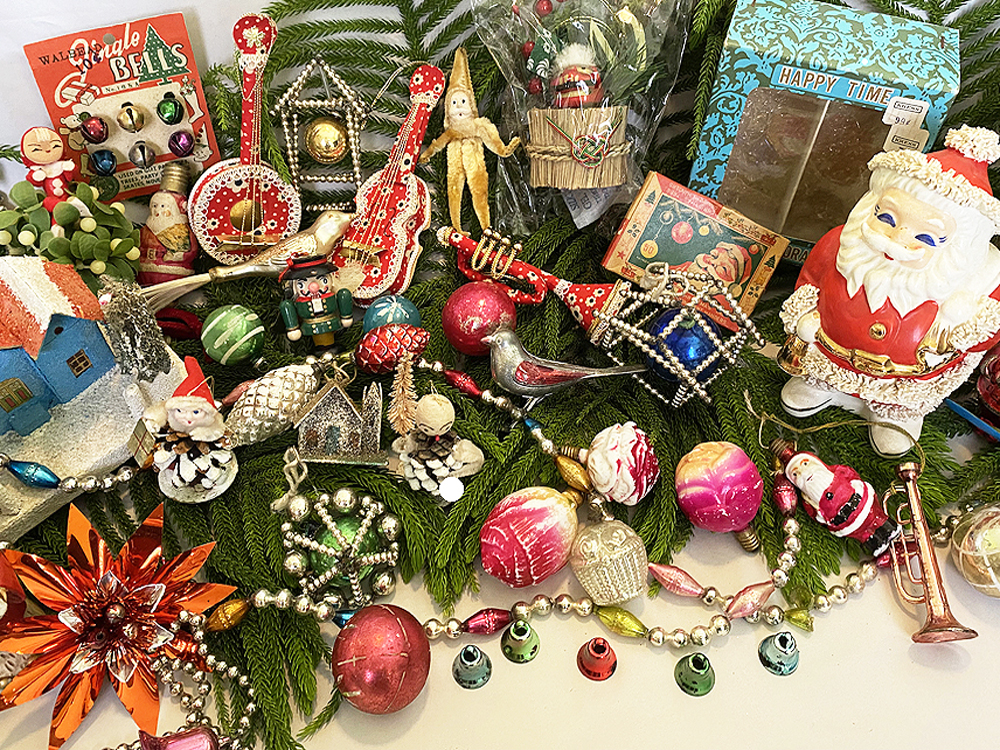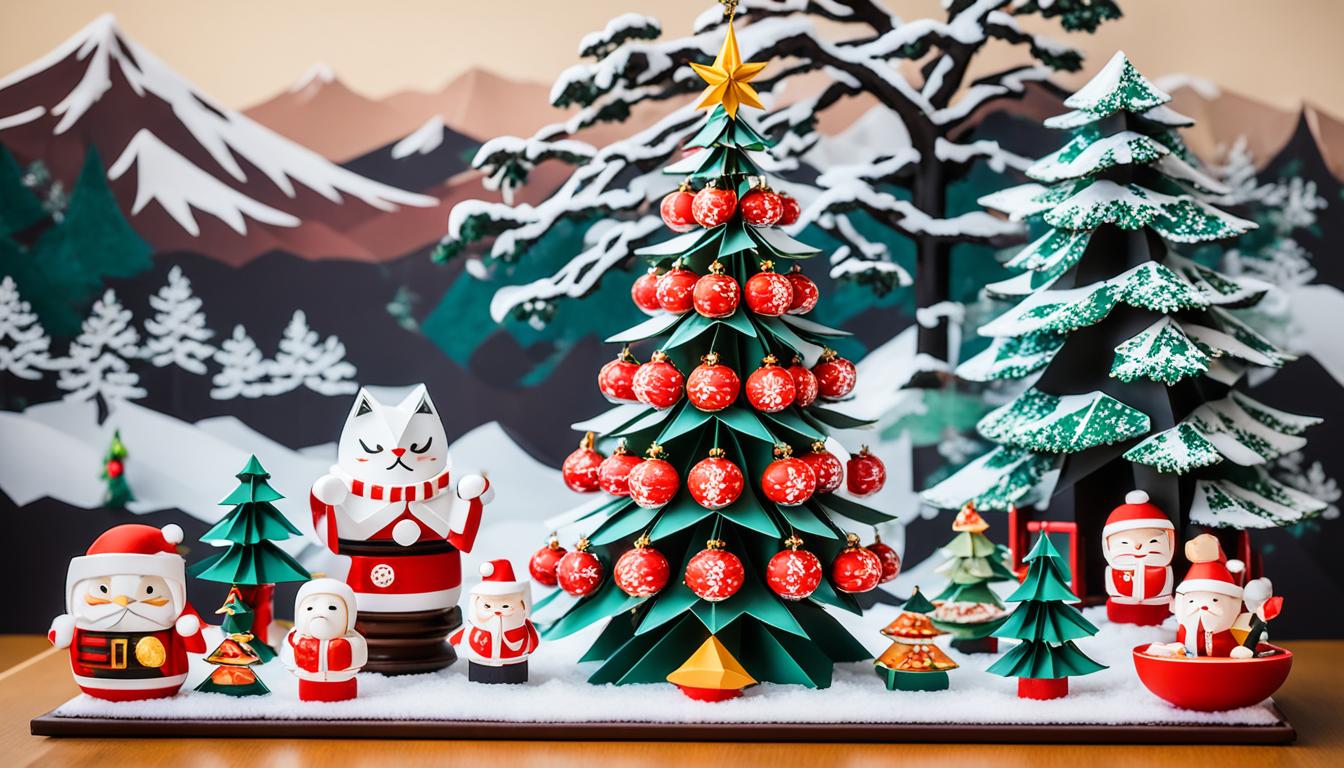When you think of Christmas, visions of snow-covered streets, twinkling lights, and traditional decorations often come to mind. However, in Japan, Christmas is celebrated with a unique twist that reflects the culture and traditions of this beautiful country. As a long-time admirer of Japanese culture, my enthusiasm for their distinct Christmas decorations has only grown over the years. In this article, we will dive into the fascinating world of Japanese Christmas decorations, exploring their origins, traditions, and how you can incorporate these elements into your festive celebrations.
The Origins of Christmas in Japan
Christmas in Japan has a unique history that dates back to the 16th century when Jesuit missionaries introduced Christianity to the country. However, it wasn’t until after World War II that Christmas began to gain popularity as a secular holiday. Today, many Japanese people celebrate Christmas for its festive spirit, regardless of religious beliefs.
From Religious to Festive
Christmas in Japan is less about religious observance and more about celebration and joy. The holiday is often characterized by romantic dinners, elaborate decorations, and the exchange of gifts, particularly among couples. Japanese Christmas decorations reflect this shift, focusing on aesthetics, charm, and creativity.

Traditional Japanese Christmas Decorations
Japanese Christmas decorations blend traditional elements with modern aesthetics. Here are some common decorations you might see:

- Illuminations: Bright, colorful lights are a staple during the holiday season in Japan, especially in urban areas.
- Wreaths: Decorative wreaths made from natural materials or bright colors are often placed on doors.
- Christmas Trees: While not traditional, many Japanese households and public spaces now feature Christmas trees adorned with ornaments and lights.
- Paper Lanterns: A nod to traditional Japanese decor, many families incorporate paper lanterns into their Christmas decorations.
Unique Elements of Japanese Christmas Decor

What sets Japanese decorations apart is the emphasis on minimalism and elegance. Here are some distinctive styles you might want to explore:
1. Minimalist Aesthetics
Minimalism is a core principle in Japanese design. During Christmas, decorations tend to be less cluttered, focusing on a few key pieces to create a harmonious atmosphere.

2. Natural Materials
Japanese culture has a deep respect for nature, and this is evident in their festive decorations. From pine branches to bamboo, natural materials are often used to create beautiful arrangements that resonate with the season.
3. Seasonal Themes
Japanese Christmas decorations often incorporate seasonal motifs, such as snowflakes, trees, and even native flora like plum blossoms. This embraces both the festive season and the natural beauty of Japan.

Modern Japanese Christmas Decorations
While traditional elements are cherished, modern influences have also shaped Japanese Christmas celebrations. Here’s how:

Influence of Western Customs
With the globalization of culture, many western Christmas customs have been embraced in Japan, including:

- Christmas Trees: Decorated with ornaments, lights, and sometimes even unique themes.
- Santa Claus: Though originally a Western figure, Santa has become a beloved character in Japanese Christmas celebrations.
- Christmas Markets: These markets feature festive foods, drinks, and unique decorations, drawing inspiration from European traditions.
DIY Japanese Christmas Decor Ideas
Creating your own Japanese-inspired Christmas decorations can be a fun and fulfilling way to celebrate the holiday. Here are a few ideas to get started:
1. Origami Ornaments
Use colorful paper to create beautiful origami shapes that can be hung on your Christmas tree. From cranes to stars, these handmade treasures add a personal touch to your decor.
2. Nature-Inspired Centerpieces
Gather pinecones, branches, and seasonal flowers to create stunning centerpieces for your dining table. This reflects the Japanese ability to find beauty in simplicity.
3. Paper Lanterns
Craft paper lanterns to hang around your home. You can personalize them with festive designs or calligraphy to make them even more special.
Comparing Japanese and Western Christmas Decorations
To give you a clearer picture of the differences between Japanese and Western Christmas decorations, here’s a comparison table.
| Aspect | Japanese Decorations | Western Decorations |
|---|---|---|
| Theme | Minimalism and Nature | Extravagance and Variety |
| Primary Colors | Red, Green, Natural Shades | Red, Green, Gold, Silver |
| Common Symbols | Paper Lanterns, Pine, Cranes | Santa Claus, Snowflakes, Stockings |
| Focus | Elegant Simplicity | Festive Excess |
Pros and Cons of Japanese Christmas Decorations
Like any decoration style, there are benefits and drawbacks to adopting Japanese Christmas decorations. Here’s a closer look:
Pros
- Elegance: Japanese decor is often understated and elegant, creating a sophisticated atmosphere.
- Connection to Nature: Using natural materials helps foster a connection with the environment.
- Creativity: DIY decor options allow for endless creativity and personalization.
Cons
- Less Familiar: For those used to more extravagant western decorations, the minimalist approach might feel lacking.
- Time-Consuming: Handmade items require time and effort, which might not be feasible for everyone.
- Cultural Understanding: It may take time to fully embrace the aesthetic and principles behind Japanese decor.
FAQs about Japanese Christmas Decorations
1. What are common colors used in Japanese Christmas decorations?
Common colors include red, green, and various natural shades. Unlike the Western palette, which often includes gold and silver, Japanese decorations tend to focus on simpler, more organic colors.
2. Where can I buy Japanese Christmas decorations?
You can find Japanese Christmas decorations at specialty stores, online marketplaces like Amazon or Etsy, and even at local craft stores that sell unique holiday decor.
3. How can I incorporate Japanese decorations into a Western Christmas celebration?
Mixing the two styles can be beautiful. Consider using minimalist Japanese ornaments alongside traditional Western decorations, creating a unique blend that reflects both cultures.
4. Are there specific Japanese Christmas traditions I can adopt?
Yes! Consider incorporating elements like a romantic dinner, the tradition of eating KFC on Christmas, or simply decorating your space with elegant, handmade crafts.
Conclusion
Exploring Japanese Christmas decorations opens up a world of creativity, elegance, and cultural appreciation. Whether you adopt traditional or modern elements, there’s a beauty in celebrating Christmas through a Japanese lens. From DIY projects to unique decor ideas, this festive season can be a celebration of both tradition and innovation. Embrace the charm of Japanese Christmas decorations, and you may find that your holiday spirit shines brighter than ever before!